Features of growing late pear Bere Bosc
In the 18th century, in the French town of Apremon, Pomolog Bosc planted unknown seeds, from which a pear tree grew with late ripening and high marketability and taste. The new variety was named Beurre Bosc in honor of the pomologist, but the pear is called differently: Bere Apremon (by place of origin), Bere Alexander and Bottle (by shape). The people got accustomed to the name Baer, which is easier to pronounce.
After a rapid spread, the Bere Bosk variety has taken a leading position in many countries. The variety is common in countries with warm climates, because pear afraid of frost, which makes it difficult for her to move north.
Content:
- Characteristics of the variety Bere Bosc
- What you need to know about planting a pear
- Principles of tree care
- How and when to prune
- What can Bere Bosk hurt?
Characteristics of the variety Bere Bosc
Pear are favorably distinguished by the large size of the fruit, which ranges from 160 to 250 grams. The peel of the fruit in an unripe state has a green-brown color, which, when fully ripe, changes to yellow and may have a brown pigmentation. The texture of the skin is rough and the flesh is tender. It seems to melt in your mouth and spreads a fragrant aroma.
Taste qualities are assessed as high, according to the tasting scale from 4.6 to 4.9 points. The pulp has a delicate and juicy texture. Feels light almond-spicy aftertaste. Bere Bosk belongs to dessert pear varieties, which are good for fresh consumption, but it is better not to use the variety in canned form and for compotes, because its pulp darkens during heat treatment.
The Bere Bosk pear contains:
- dry soluble substances - about 15%
- sugars - about 10%
- titratable and ascorbic acids - 0.3% and 4.7 mg per 100 grams
- P-active catechins - about 42.5 mg per 100 grams of raw fruit.
The shape of the fruit is bottle-type, but can vary even in the same tree. There are practically no funnels, and the cup is of an open type with a narrow-flat depression with folds on the walls. Small dark seeds are placed in a spacious bulbous seed nest. Pears are firmly attached to the twigs with thick, curved stalks and are not prone to shedding even under the influence of strong winds.
The ripening period in the southern regions falls on the first half of September, and in the northern regions - at the end of the month.
Fruits ripen unevenly, so the harvesting process is carried out in several stages and can take a month. Gardeners do not recommend removing pears until they are fully ripe, as their taste may deteriorate. Pears are stored for a relatively short time - up to 40 days. With longer storage, the palatability decreases, the pulp coarsens, and the juiciness decreases.
The Bere Bosk pear tree is vigorous and has an active growth rate at the seedling stage. Under optimal conditions, large trees grow from seedlings, which are distinguished by rare asymmetrical pyramidal crowns. As they grow older, the trees grow and become spreading.
The branches are massive, covered with a rough light brown bark, often with small lenticels. The kidneys have a flattened appearance. The leaves are large enough and fleshy with a glossy dark green surface. They are held on the branches with short petioles. The flowers are large enough, wide open, quite resistant to cold weather. In addition, the pear blooms late, which helps to avoid recurrent frosts.
The rate of early maturation of the variety is low. Bere Bosc begins to bear fruit in the sixth or seventh year after planting. The trees give the maximum yield by the age of twenty and it can be up to 150 kg from one specimen.
Bere Bosk does not have a high level of winter hardiness and drought resistance. At low temperatures, a tree, especially a young tree, can completely freeze out. At the same time, the tree has good immunity to diseases and harmful insects.
The following advantages of the Bere Bosk variety can be distinguished:
- large, showy fruits with good taste
- high productivity
- good transportability
- ability to stay on a tree for a long time
- immunity to diseases
Well, the pear also has a number of disadvantages:
- large tree sizes
- low early maturity
- instability to frost and drought
However, despite some inconveniences, the Bere Bosk pear is often used in breeding work. On its basis, about two dozen varieties have already been bred, some of which have been zoned.
What you need to know about planting a pear
Further rooting and growth and fruiting depend on the correct planting of a pear. When carrying out the procedure, it should be borne in mind that the tree has strong roots and prefers a warm climate with a lot of sunlight.
The optimal place for landing will be a hill, but if there is none, then a site without swampiness is chosen.
The soil for planting a seedling culture needs loose so that moisture and air pass through well. It will not be superfluous to add a complex of nutrients.
A pear is planted in the spring-autumn time and a pit for planting should be prepared in advance:
- The bottom of the hole is laid out with a drainage layer, and the garden soil is enriched organic.
- It should also be borne in mind that pear trees have a negative attitude towards soils with high acidity, therefore, wood ash.
- In the fall, the pit is filled with fertile soil, and in the spring a young tree is placed in it, which has not yet entered the vegetative period.
When planting, you should carefully level the roots of the tree, and leave a few centimeters of the root collar above the ground. After the procedure, the soil should be well tamped and mulched, and the seedling should be tied to a support.
When planting several Bere Bosk pears in the garden, an interval of at least five to six meters should be left between them so that they do not interfere with each other's development.
Principles of tree care
Caring for pears is not difficult, because it does not require special skills. It is enough to fulfill a number of requirements that are relevant for any fruit trees:
- The pear does not need abundant irrigation - excess moisture leads to decay of the roots. Irrigation is carried out in the spring-summer period and in small portions. One or two buckets of water are enough for a tree.
- Some time after watering, the soil of the near-stem circle must be loosened, in parallel getting rid of weeds.
- Carrying out preventive treatments with special preparations will help prevent the development of diseases and the same harmful insects. The procedure is carried out in early spring, until the flowers bloom on the tree and in the fall - after the foliage has fallen off.
- Top dressing begin to make a year later after the pear planting. During the season, fertilizers are applied three times: when the leaves are blooming, when the tree is blooming and when the fruit is laid. And in order to help the pear to survive the winter with the least losses, organic matter can be added after harvesting.
If the care is carried out correctly, then every year the tree will grow by forty centimeters, and the fruiting specimens by twenty centimeters.
How and when to prune
An important point in the cultivation of pears of the Bere Bosk variety is crown formation in the first years after disembarkation. It should be borne in mind that the tree is growing rapidly in height, so all efforts are directed to slowing down this process. To do this, pinch the tops of the seedlings so that the nutrients rush to the side branches.
The following cuttings are of a sanitary nature: dry and damaged shoots are subject to removal, as well as those that direct their growth to the inner part of the crown and contribute to its thickening.
What can Bere Bosk hurt?
Despite the rather high resistance to diseases, the Bere Bosk pear can get sick and it is important to know the "enemy in the face" in order to prevent loss of yield and death of the tree:
- Bacterial infections or burns are a disease that manifests itself in the first month of summer by blackening of the leaves and tips of the shoots, which take on a burnt appearance. The occurrence of the disease is associated with the penetration of bacteria into the tissue of the tree through damage and cracks, as well as when trimming with a non-sterile instrument. The treatment is quite complex and lengthy - pears are sprayed with antibiotics (thiomycin, agrimycin or penicillin) diluted with water, when the first flowers open. The following procedures are performed every five days.
- Scab. The disease causes spores of the fungus, which infect leaves, ovaries, branches and fruits. The affected parts are covered with gray spots with a greenish-brown bloom. If you do not take any measures, then soon the leaves begin to dry and fall off. To prevent scab, in early spring, the soil is sprayed with poisons that can destroy the spores of the fungus, and before winter, they remove and destroy the fallen leaves. For treatment, urea, ammonium nitrate or potassium chloride in the form of solutions are used.
- Phylosticosis caused by pycnidial fungi. When infected, brown specks appear on the leaf plates and fruits, which eventually acquire a grayish appearance with dark blotches - pycnidia. There are no effective ways to combat the disease, because the fungus itself is poorly understood.
- Also, the Bere Bosk pear can be affected by ulcerative cancer, fruit rot and cystosporosis, which are characteristic of many fruit representatives.
The Bere Bosk variety is in high demand among consumers and gardeners. It is not difficult to grow it, enough periodic watering and top dressing, and in return the tree will thank the attentive owner with a generous harvest of delicious fruits.
More information can be found in the video:



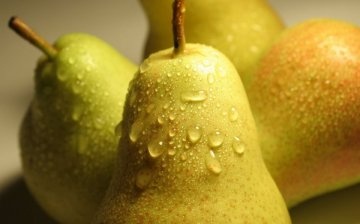
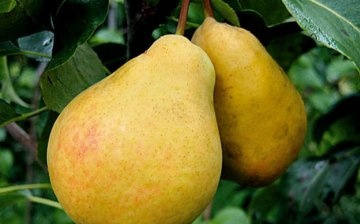
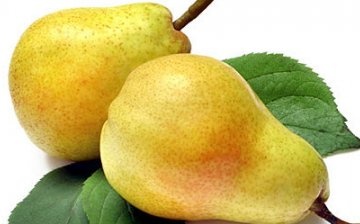
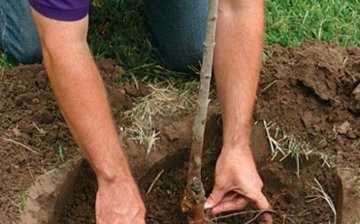

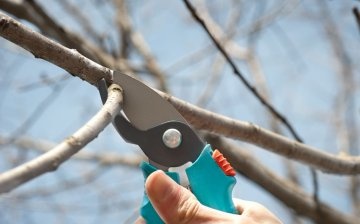
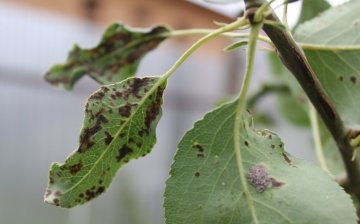







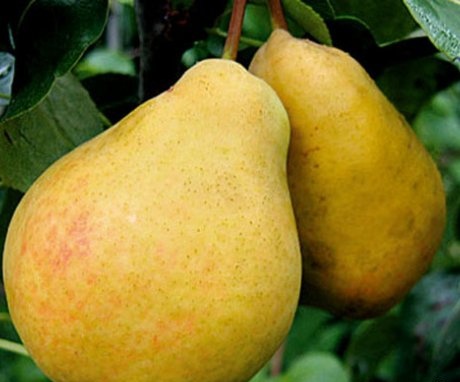
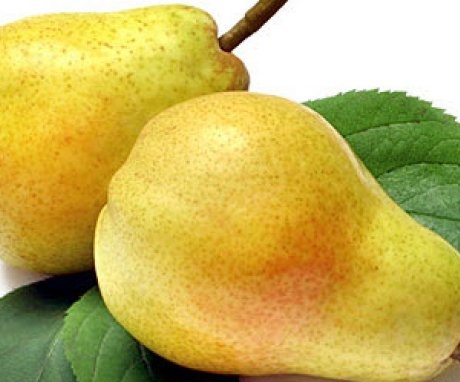
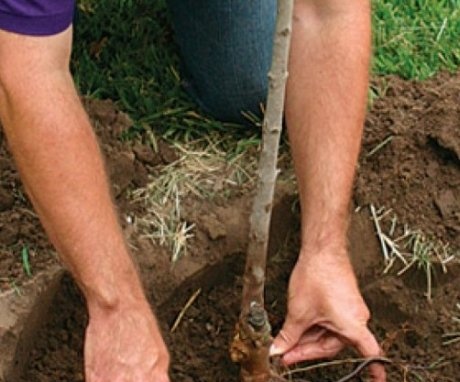
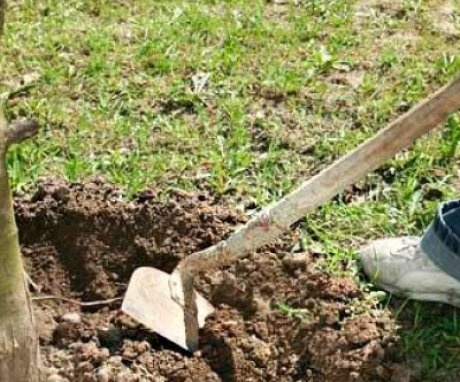

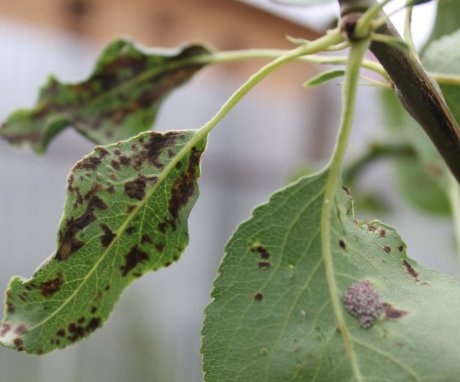
Very tasty pears grow, you will not regret planting a tree, with regards to the elevation, we have met the condition, so I don’t know how the tree will behave in other cases.